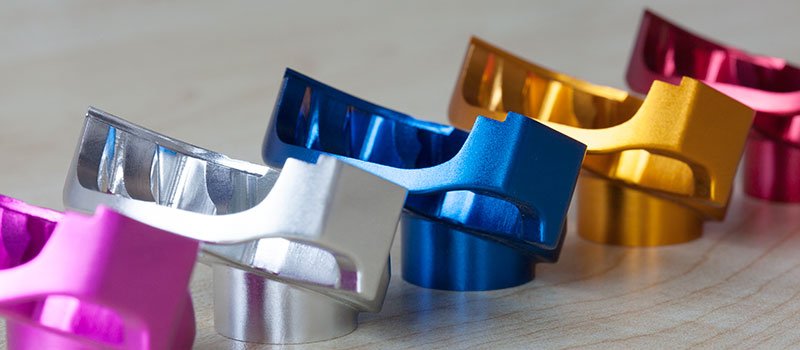
Anodized aluminum is treated to enhance its durability and resistance to corrosion, which is great news for longevity. However, even this tough material isn’t immune to the effects of time, sunlight, and other environmental factors. This fading can happen to popular brands of hardware, like furniture from IKEA or bike components from Specialized. Understanding why it’s happening is key to keeping your gear looking fresh and new.
What Is Anodized Aluminum?
Before diving into fading, let’s clarify what anodized aluminum really is. Anodizing is an electrochemical process that thickens the aluminum oxide layer on the surface. This not only enhances its corrosion resistance but also allows for vibrant colors and finishes. Think of anodizing as putting a protective shell on a fruit; it keeps the good stuff inside safe while adding a pop of color on the outside.
The anodized layer is more durable than standard aluminum and can withstand harsh conditions, making it ideal for outdoor products. This layer can be dyed in various colors, which is why many of your gadgets and hardware come in stunning hues. But here’s the catch: while anodized aluminum is tough, it’s not invincible.
Common Causes of Fading
There are several culprits behind the fading of anodized aluminum hardware. Here are the most common reasons:
- Sunlight Exposure: UV rays from the sun can slowly break down the dye used in anodizing. This is particularly prevalent for items left outside, such as patio furniture.
- Environmental Elements: Rain, snow, and pollution can all contribute to fading. The chemicals in rain can react with the anodized surface, dulling its finish.
- Wear and Tear: Frequent handling can wear away the anodized layer. This includes cleaning and scrubbing, which can be rougher on the surface than you might think.
- Low-Quality Anodizing: Not all anodizing processes are created equal. Lower quality finishes may fade faster than those treated with better techniques.
Understanding these factors can help you take better care of your anodized aluminum items. For example, if you live in a sunny area, consider placing your furniture in a shaded spot or using protective covers.
How To Prevent Fading
So, what can you do to keep your anodized aluminum hardware looking its best? Prevention is key, and with a few simple steps, you can extend the life of that colorful finish.
1. Use Protective Covers
If you’re storing outdoor furniture or equipment, always use protective covers. These can shield your items from UV rays and rain, drastically reducing the chances of fading.
2. Clean Gently
When it comes to cleaning, use mild soap and a soft cloth. Avoid harsh chemicals and abrasive sponges that can scratch the anodized surface. Give your hardware a gentle wipe-down to keep it clean without causing damage.
3. Store Properly
For items not in use, store them in a cool, dry place away from direct sunlight. If you have tools or parts, consider a storage container to protect them from the elements.
4. Refinish if Necessary
If fading does occur, refinishing your anodized aluminum can breathe new life into it. There are kits available to help you refresh the color, or you can consult with a professional for a more in-depth restoration.
By following these tips, you’re not just slowing down the fading process; you’re also enhancing the longevity of your anodized aluminum items, keeping them vibrant for years to come.
Understanding the Anodizing Process
To really appreciate why fading happens, it’s helpful to understand the anodizing process itself. During anodization, aluminum is immersed in an acid electrolyte bath, where the aluminum surface is oxidized to form a thicker protective layer. Inside this layer, dyes can be added to create color.
This means that while the anodized layer provides a great defense against corrosion and wear, the color is essentially bonded to that outer layer. Over time, elements like UV light can break down this bond, causing the color to fade.
To visualize this, think of it like painting a wall. If you use high-quality paint, it may resist fading for a long time. But cheap paint might look great at first, then wash out quickly. The same principle applies to anodizing!
When to Seek Professional Help
You might be wondering when it’s time to call in the experts. If you’ve tried cleaning and gentle maintenance but the fading persists, it might be a good idea to consult with professionals who specialize in anodized aluminum. They can assess the damage and suggest the best course of action, whether that means refinishing or even re-anodizing the hardware.
A professional touch can often restore the original look and feel of your items, making it a worthy investment if fading is severe.
Final Thoughts on Fading Anodized Aluminum
Seeing your anodized aluminum hardware fade can be disheartening, but it’s not the end of the world. With the right care and maintenance, you can keep that lovely finish in good shape.
Remember, understanding the causes of fading—like sunlight and environmental factors—puts you one step closer to prevention. Regular cleaning and proper storage go a long way. If all else fails, professional refinishing can bring back the brightness.
Taking these steps ensures your anodized aluminum items not only look great but also serve you well for years to come. So, keep that superhero costume intact and enjoy your gleaming gear!